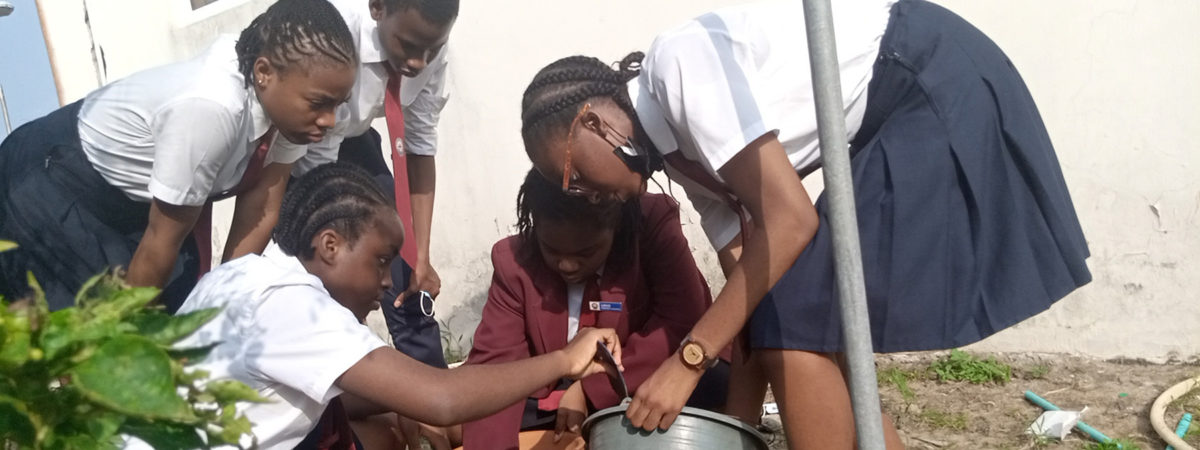
I have been in the teaching profession for over 12 years as a science educator in different schools. I have consistently evolved my teaching practices to accommodate my learners and deliver on my objectives. At the beginning, I usually delivered instruction to my class through lecturing and other more traditional teaching methods. Since then, my approach has transformed into a more engaging 21st-century teaching style. My classroom is alive to student engagement, collaboration, and inspiration beyond the four corners of the classrooms.

Engaging with students as they demonstrate their learning. Photo credit: Victor Okosun
As a science educator, I frequently explore different teaching methods such as Activity-Based Learning in order to meet the needs of my learners. Ever since I discovered this style of teaching, my class has taken a new shape. Students are more engaged and they are more excited during lessons. This style of learning has also awakened the love for science among students who thought science was abstract. It has made science more real to students and helps them connect science concepts and topics to other subjects they are learning about.

Picture gallery of hands-on activity based learning. Photo credit: Victor Okosun

My students in a brainstorming session. Photo credit: Victor Okosun
As part of the Challenge, learners worked in teams to brainstorm problems within the community that are related to topics in the school curriculum. Each team developed an action plan that enabled them to execute their plans and involve everyone in specific tasks and responsibilities. At the end of the day, we came up with a fantastic project—the Vicapot Refrigerator.
For the brainstorming sessions, I put the students, my team, together and they were coming up with different ideas that can make the project a great one. So, I had the opportunity to see different crazy, beautiful, powerful ideas, that if there were no limitations, these ideas would have been put to work. So that day was a favorite and wonderful day.
Victor Okosun
At the end of the project, learners gained mastery skills in problem solving, critical thinking, teamwork, and collaboration that are much-needed 21st century skills. This hands-on approach not only impacts their cognitive skills, but also their psychomotor and affective development, which is often neglected in more traditional learning experiences.

Students with their Vicapot Refrigerator design. Photo credit: Victor Okosun
During the Ciena Solutions Challenge, students had the opportunity to interact with like-minded students from schools in other parts of the world. This served as a great motivation for my students, as did the recognition their project received when it was announced as a featured project in the Ciena Solutions Challenge Gallery.
I encourage educators all over the world to research and adopt teaching methods such as Project Based Learning and Challenge Based Learning that will keep learners engaged, spark their interest, and above all, inculcate problem solving skills and critical thinking skills. This is the opportunity that the Ciena Solutions Challenge brought to us.